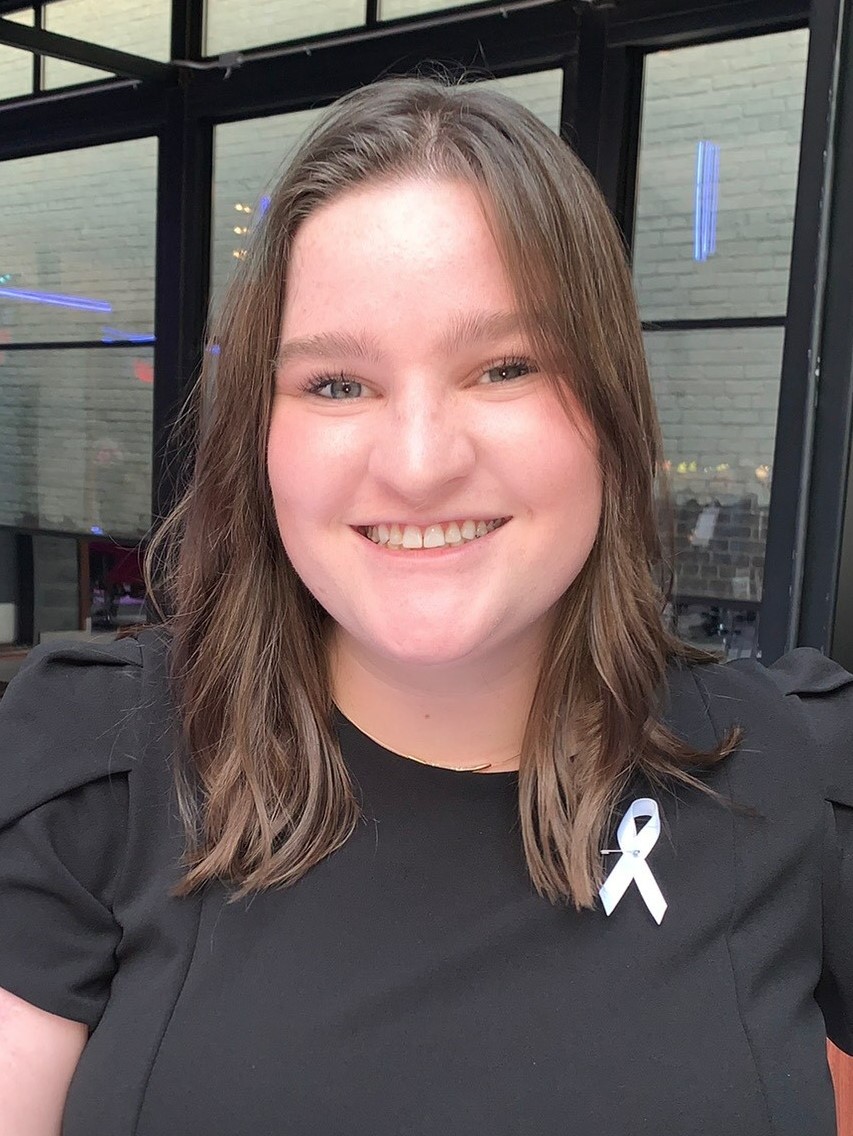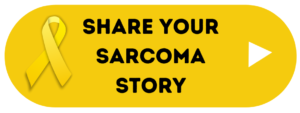My Sarcoma Story – Megan

Megan Gedemer of Milwaukee, Wisc., was diagnosed with a tennis ball-sized synovial sarcoma in her shoulder at twenty years old. This news came after five agonizing years of misdiagnoses including bad posture. “I had terrible range of motion, social events were becoming miserable, and nothing was worse than the pain I was in,” says Megan. “I had not slept through the night in years.”
Strange as it may seem, Megan was “excited” to receive her diagnosis. She explains that after she learned about her sarcoma “no one, including myself, could imply I was faking it, being dramatic, or seeking pain meds, anymore.
She first turned to the internet and Instagram to learn as much as possible about her diagnosis and interact with sarcoma survivors. She has messaged and been messaged “by patients all over the world seeking advice or just a friend.” Her strongest connection was with Miriam who was diagnosed six months after she was, had the same subtype and was the same age. “I know from experience that finding out someone with a similar diagnosis is alive and well is so exciting. I know in my heart I gave her hope that it (the treatment) might work for her too,” says Megan. While both women were treated with the same chemotherapies, Ifosfomide and Doxirubicin, Miriam died a year later when sarcoma spread to her lungs. Every time Megan sees an Instagram post announcing the death of one of her pen pals, her thoughts turn to Miriam. “Miriam will always stick with me the most, because she was the first,” she says.
She has nothing but praise for her medical team at Froedtert & The Medical College of Wisconsin, but also has an interesting perspective on her sarcoma journey. “I have the best team anyone could ask for, and I do not wish to discredit any of their skill and heart,” she says. “But no amount of care and compassion can always save you from sarcoma. I feel that what saved me was luck. I was lucky I didn’t need to travel hours to get the best care possible. I was lucky that in the 5-7 years I had this tumor, it didn’t spread. I was lucky my tumor was located where it could be removed. I am lucky I still have an arm. And I am lucky that the one treatment option I had available worked to kill the cancer cells in my body, and not me along with it. Not everyone gets that luck.”
Megan believes that no sarcoma patient should need “luck” to survive, and that raising awareness for early detection is key. She is now over three years cancer-free and chooses to “own” her survivorship. “Sometimes I just want to leave sarcoma in the past, but I can’t,” she says. She learned that the chemotherapies used for her treatment, Doxirubicin and Ifosphomide, were developed in 1974 and 1987 respectively – the same years the Kodak camera and the Rubik’s cube hit store shelves. These treatments only have a 66% cure rate. “We didn’t stop there with breast cancer survival rates or cameras and toys for that matter either,” says Megan. “So, we shouldn’t stop there with sarcoma. We have work to do – through funding research and raising awareness for early detection, it can be done.“


